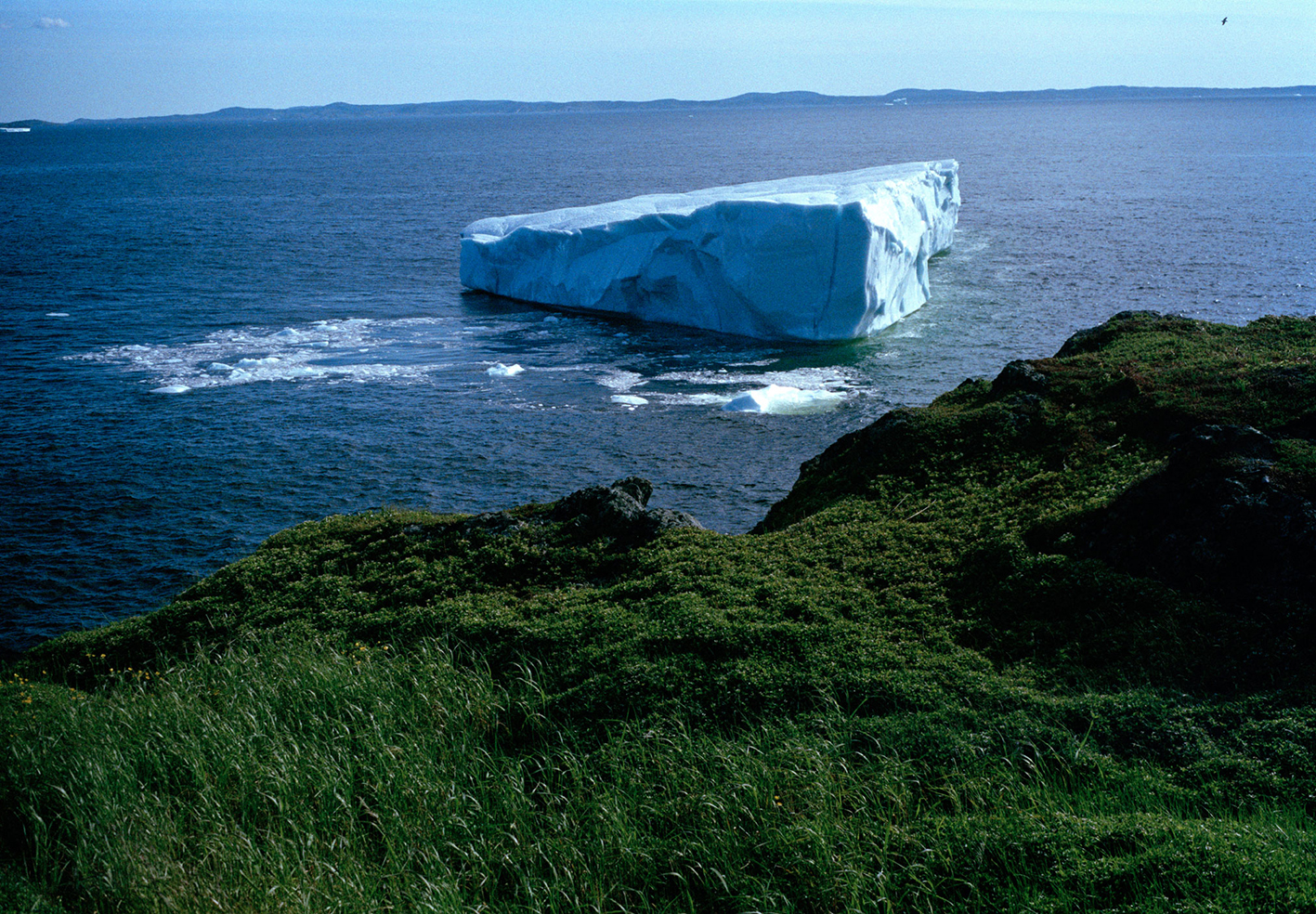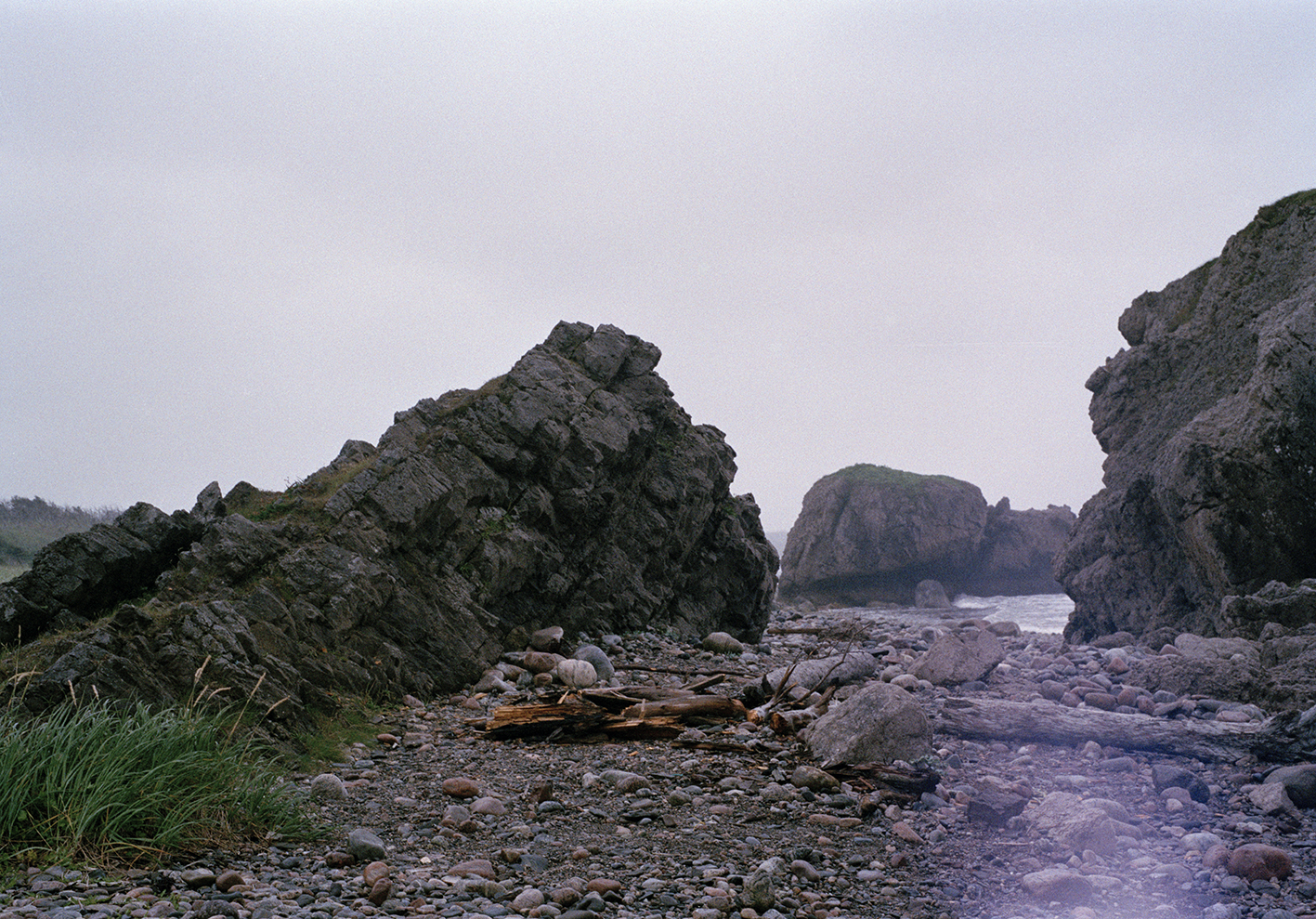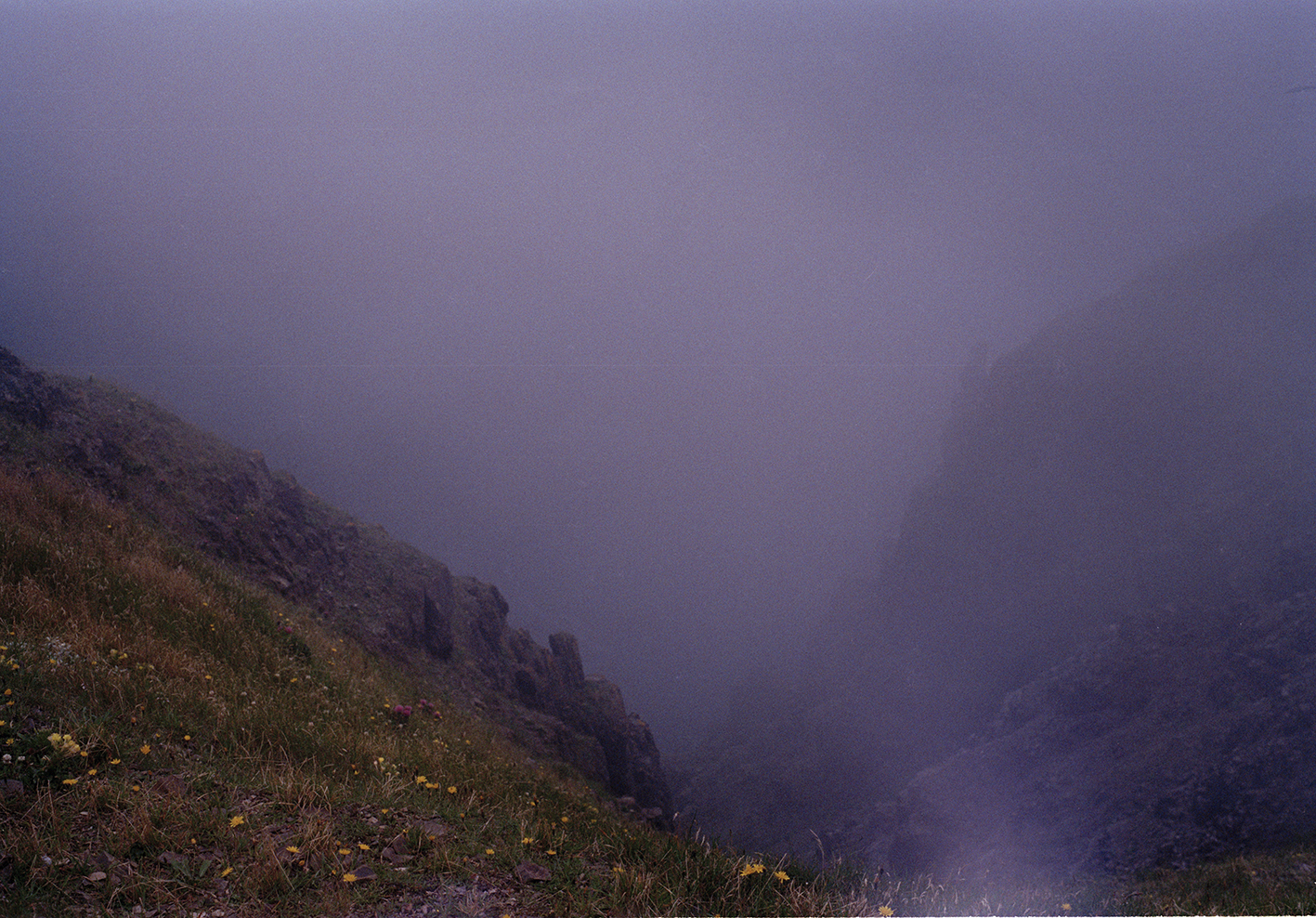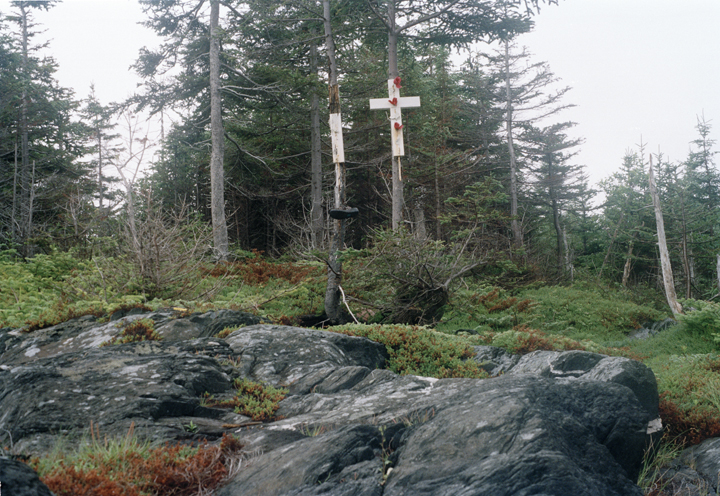Exploits
Mixed media installation. 2012.
18 framed photographs printed on Museo Rag, wood, neon, glass beads, framed article, framed magazine archive, framed archive map, framed watercolour.

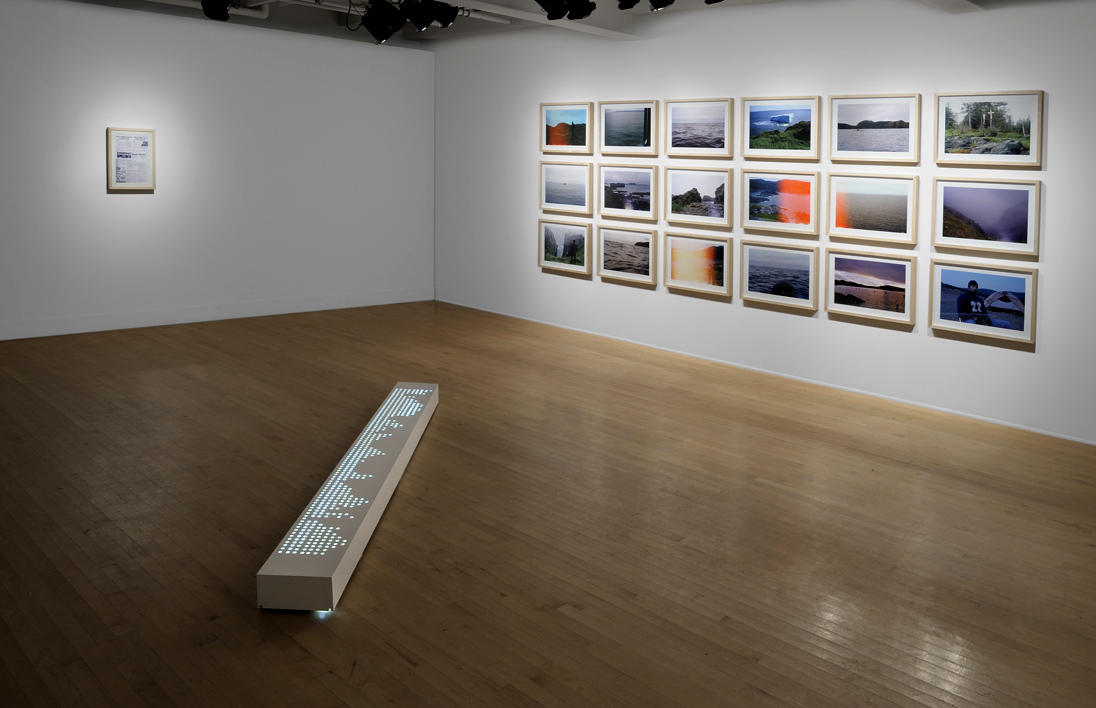
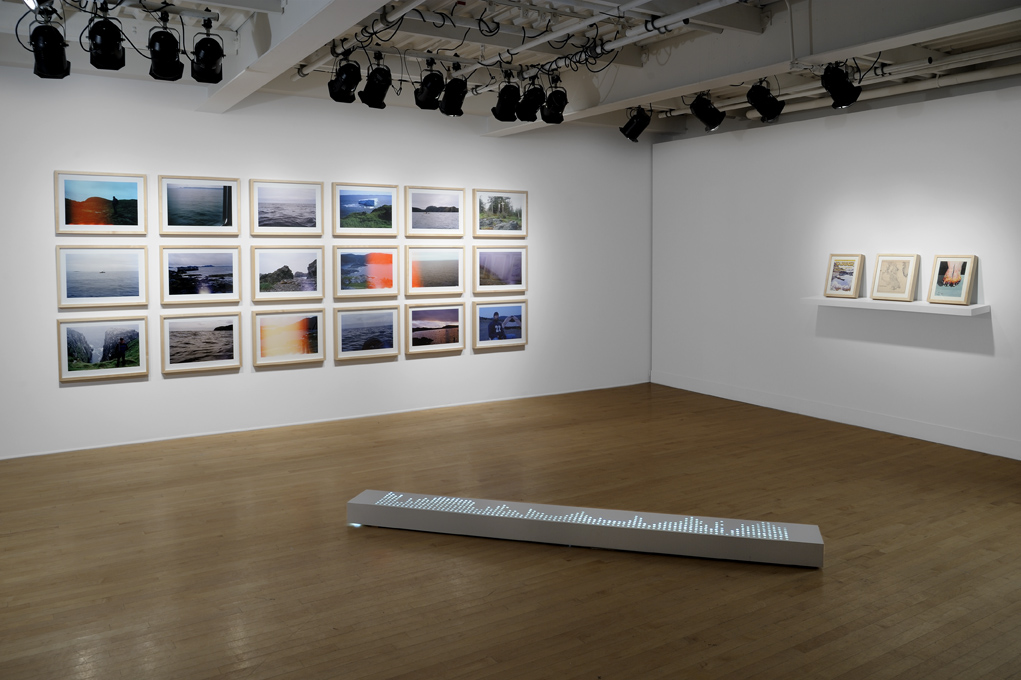
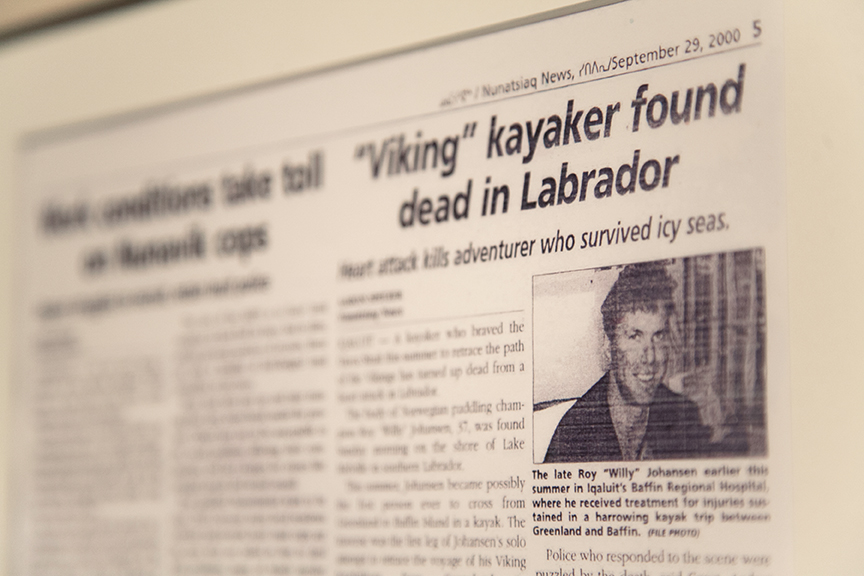



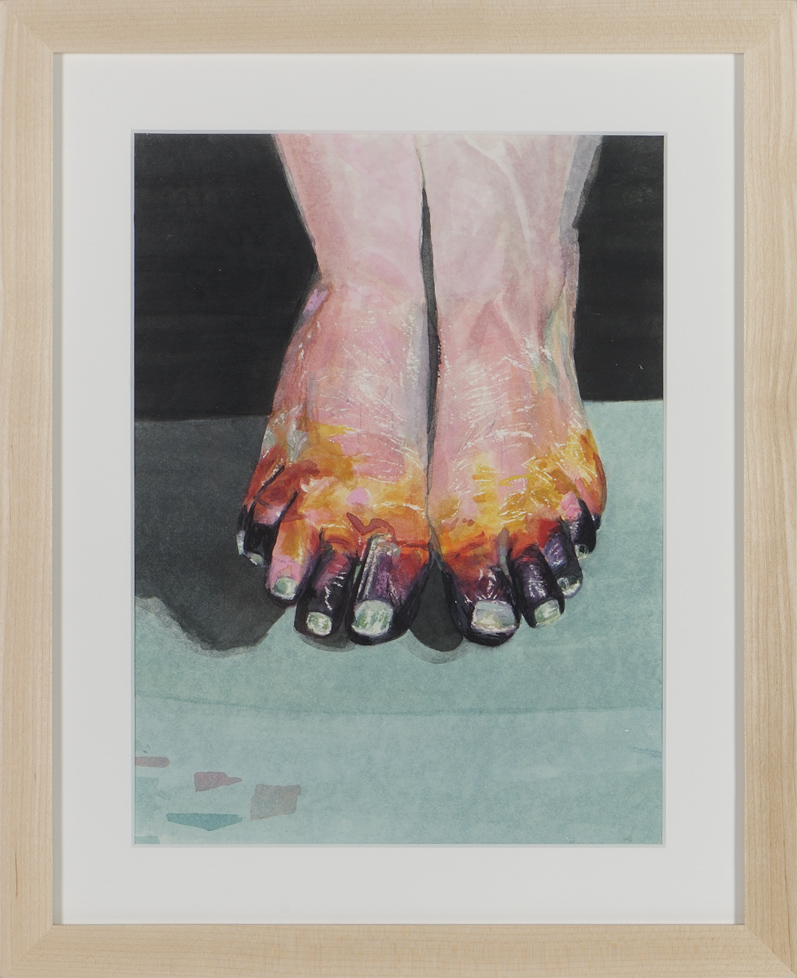
Photos: Charles-Frederick Ouellet, Étienne Boucher
Texte d’exposition
DE L’EXPLORA-TION
Dans un passé récent, l’explorateur avançait avec la limite de sa culture devant les yeux : « avancer vers l’inconnu », disaient-ils. Mais voilà : d’inconnu devant, il n’y a plus. Alors que fait-il, le bel aventurier qui se lance dans le trek extrême ? Il va à l’extrémité de quoi ?
C’est ce qu’Amélie Laurence Fortin, dans cette seconde partie d’une recherche trilogique, nous donne à voir. L’explorateur moderne n’explore rien : il ne va qu’aux limites de sa propre culture, de l’intérieur. De nature, point.
Quelle différence y a-t-il entre être au sommet de l’Everest et au coin Dupont/De La Salle ? Du point de vue de l’exploration, rien. Dans les deux cas : espace nommé, normé. Une coor-donnée GPS, un nom sur une carte. Certains diront : la souffrance en moins, mais c’est qu’ils n’ont pas été au coin Dupont/De La Salle. L’extrémité dont il est question dans l’aven- ture de l’explorateur moderne est celle d’un trait qui s’élance devant l’explorateur, dans le sens de son trajet. L’explorateur parcourt le tracé jusqu’à revenir sur ses pas, mais ne le quitte jamais : il n’est toujours que porteur de sa culture, de ses outils, du logo de ses vêtements de marque. Exploration ? Non. Confirmation. Consolidation.
Et pourtant, il y a une autre approche, qui ne repose pas sur l’exotisme du décor dans lequel se pose le pied vêtu. Il y a une limite dont le trait est perpendiculaire au corps de l’explorateur, trait qui s’amincit pendant le voyage, comme la pellicule plastique de l’abri ou de l’esquif, dont le corps devient ténu, et s’abolit dans la rencontre culture/nature, permettant le contact presqu’immédiat entre l’intérieur et l’extérieur. Dans cette condition d’extrémité, que l’altérité soit celle du passage du Nord-Ouest ou du trottoir de la rue Saint-Joseph n’a pas grande importance : l’aventurier s’efface dans le dedans/dehors, s’abîme dans l’instant et la mer.
- Jocelyn Robert
Exhibition text
ON EXPLORA-TION
In the recent past, explorers travelled with their cultural boundaries before their eyes: “into the unknown wilds”, they said. Today, however, nothing is unknown. So what does the intrepid adventurer setting out on an extreme trek do? He goes to the extremity of what?
This is what Amélie Laurence Fortin, in this second part of a three-part project, reveals. Modern-day explorers explore nothing: they go only to the boundaries of their own culture, of themselves. Of nature, not at all.
What difference is there between someone at the summit of Mount Everest and another at the corner of Dupont and De La Salle streets? From the point of view of exploration, nothing. Each is a named, normalised space. A GPS coordinate, a name on a map. Some might say: minus the suffering, but they have never been at the corner of Dupont and De La Salle. The extremity in question in the modern-day explorer’s adventure is that of a line stretching before them in the direction of their path. The explorer follows this line and then retraces his or her steps, but never leaves it: they can only ever be the bearer of their culture, their tools, the logo of their brand-name clothing. Exploration? No. Confirmation and consolidation.
And yet there is another approach, one that does not rest on the exoticism of the setting in which we step foot. There is a boundary whose line is perpendicular to the body of the explorer, a line that thins out during the journey, like the plastic film of the shelter or the skiff, whose body narrows and is suppressed in the culture/nature encounter, making possible an almost immediate contact between inside and out. In these circumstances of extremity, whether the otherness in question is that of the Northwest Passage or the sidewalk on St. Joseph Street is of little importance: the adventurer is obliterated in the inside/outside, swallowed up by the moment and the sea.
- Jocelyn Robert, translated by Timothy Barnard
